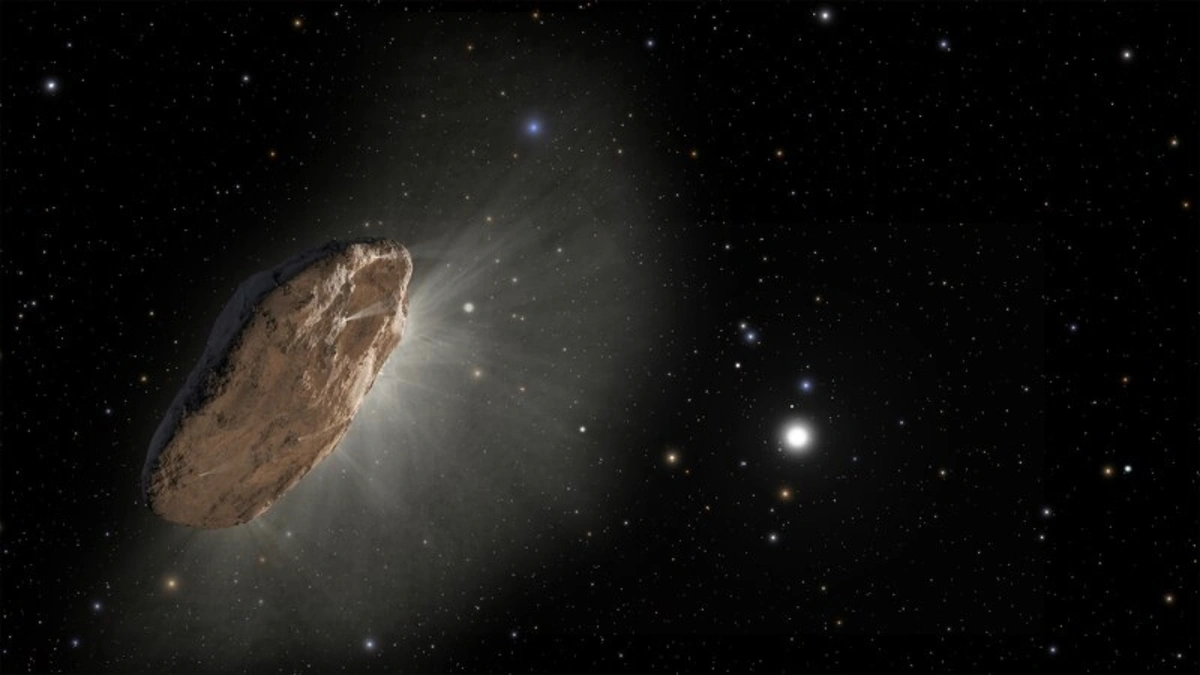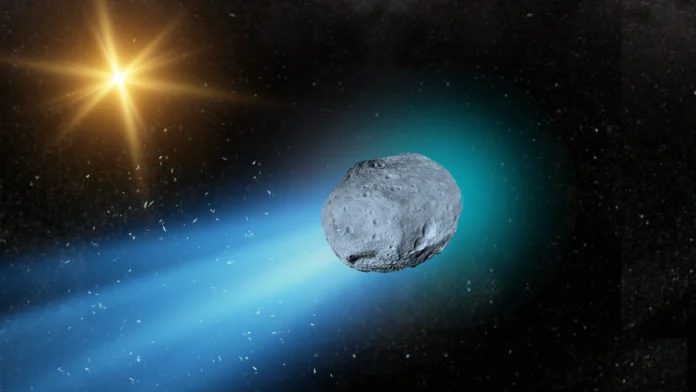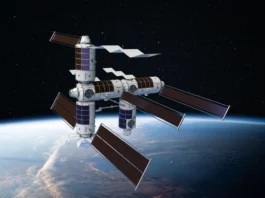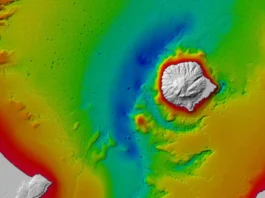Okay, let’s be real. The universe is a massive, mysterious place, and the idea of an interstellar visitor showing up in our cosmic backyard is both thrilling and a little terrifying. Are we talking about a harmless comet, shedding ice and dust as it gracefully glides by? Or could it be something far more… intriguing? Something like, say, an alien mothership?
It’s a question that’s been bugging astronomers – and science fiction fans – for years. With each new observation, each new trajectory calculated, we edge closer to potentially answering it. So, when will we know for sure? And more importantly, why should we even care?
Why This Interstellar Visitor Matters

Here’s the thing: interstellar objects, like ‘Oumuamua and Comet 2I/Borisov, are rare. They offer us a glimpse into other star systems – literally pieces of other worlds passing through our own. Understanding their composition, their trajectory, their behavior, could unlock fundamental secrets about the formation of planets and the distribution of life (or at least, the building blocks of life) throughout the galaxy.
But the real kicker? The possibility, however remote, that one of these objects might not be entirely natural. Let’s be honest – the thought of an alien probe or interstellar probe lurking in the darkness is a scenario straight out of science fiction. But science fiction often inspires science fact. And the very act of considering such a possibility forces us to examine our assumptions about what’s “natural” and what’s “possible.” It also encourages us to improve our detection and analysis methods.
Think about it this way: if we were to detect an alien artifact, would we even know it? Would we recognize the signs? Or would we dismiss it as just another weird rock hurtling through space?
Decoding the Clues | Comet or Mothership?
So, how do scientists actually try to determine the nature of these interstellar wanderers? It boils down to careful observation and analysis, comparing what they see to what they expect from comets and asteroids. Here’s what they look for:
- Trajectory: Comets and asteroids usually follow predictable paths governed by gravity. Deviations from these paths could indicate non-gravitational forces at work, such as thrust from a propulsion system (hint, hint – potentially alien).
- Composition: Spectroscopic analysis can reveal the chemical makeup of an object. This can help determine if it’s made of materials that are common in our solar system, or something more exotic. For instance, the presence of certain rare elements or unusual isotopes could raise eyebrows.
- Behavior: Comets often exhibit a coma (a fuzzy atmosphere) and a tail as they approach the sun, due to the sublimation of ice. The absence of these features might suggest that the object is not a comet, or that it’s made of something else entirely.
And, of course, there’s the wildcard: direct observation. A clear image revealing artificial structures or signs of technology would be a game-changer. But let’s be realistic – that’s a long shot. The distances involved are vast, and the objects are often small and faint. But with advancements in telescope technology and data analysis, who knows what the future holds?
I initially thought that this determination was just about scientific curiosity, but the implications of finding either a comet from another star system or proof of extraterrestrial technology are huge. Think about it : confirming alien life, even through an artifact, would change our understanding of our place in the universe forever.
The Search Continues | What We’re Watching For
Astronomers around the world are constantly scanning the skies, looking for new interstellar objects. The Vera C. Rubin Observatory, currently under construction in Chile, is expected to revolutionize our ability to detect these objects, thanks to its wide field of view and powerful imaging capabilities. The Rubin Observatory , when operational, should significantly improve the rate of discovery and provide detailed information about interstellar objects.
But even with the best technology, it’s a numbers game. The more objects we find, the better our chances of finding something truly extraordinary. And that’s where citizen scientists come in. Anyone with a computer and an internet connection can participate in the search, analyzing data and helping to identify potential candidates. Several citizen science projects are already underway and yielding fascinating results.
And that’s where the emotional angle hits me: the sheer awe of participating in this search, no matter how small my role. Imagine being the person who spots the first sign of alien technology ! The feeling must be something else entirely. Crazy, right?
What fascinates me is the potential for future interstellar missions. Imagine sending probes to intercept these objects, to get a closer look and gather more data. It would be an incredibly challenging undertaking, but the scientific payoff could be enormous.
The Unanswered Questions and Future Discoveries
So, when will we know for sure if an interstellar object is an alien mothership or just a comet? The honest answer is, we don’t know. It could happen tomorrow, it could happen next year, or it might not happen at all. But the search itself is what’s important. It’s a testament to our curiosity, our ingenuity, and our desire to understand our place in the cosmos.
As our technology improves, our detection methods become more sophisticated, and our understanding of the universe deepens, we increase our chances of finding something truly remarkable. And even if we never find definitive proof of alien life, the journey will have been worth it. Because in the process, we’ll learn more about ourselves, our planet, and our place in the grand scheme of things.
The possibilities related to interstellar travel have always fueled the interest of writers of science fiction and scientists alike. The idea that interstellar objects may hold clues to the existence of extraterrestrial intelligence pushes us to expand our knowledge.
Let me rephrase that: This isn’t just about finding aliens. It’s about expanding the horizon of human potential. And that, my friends, is a goal worth pursuing.
FAQ | Unraveling Interstellar Mysteries
What exactly is an interstellar object?
It’s an object, like an asteroid or comet, that originates from outside our solar system and passes through it.
How are interstellar objects detected?
Astronomers use powerful telescopes to scan the sky, looking for objects with unusual trajectories and velocities.
What if I forgot my application number to start looking for these objects?
Detecting interstellar objects requires specialized equipment and expertise. You won’t need an application number unless you are a scientist using data archives.
Are all interstellar objects comets?
No, they can also be asteroids or even other types of objects we haven’t yet encountered.
Could an interstellar object pose a threat to Earth?
While it’s possible, the chances are extremely low. Most interstellar objects are small and pose no significant risk.
What’s the most exciting thing about studying interstellar objects?
The potential to learn about other star systems and the possibility, however slim, of finding evidence of extraterrestrial life.




